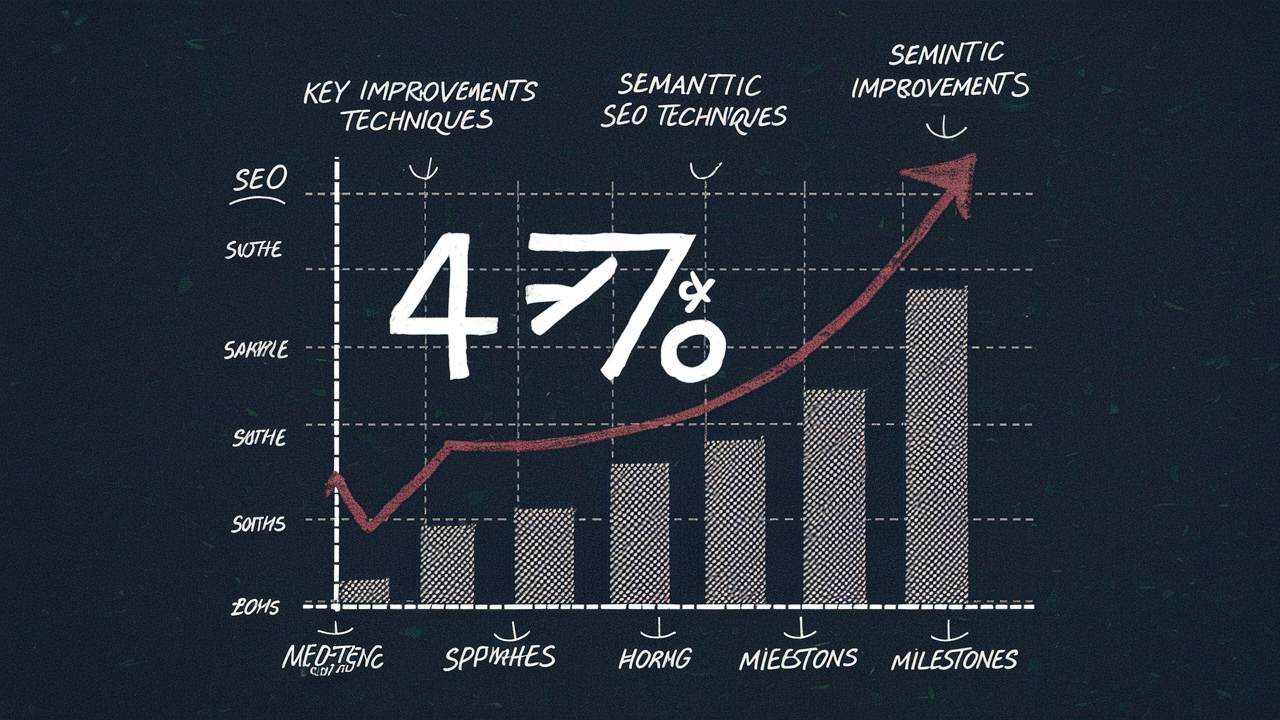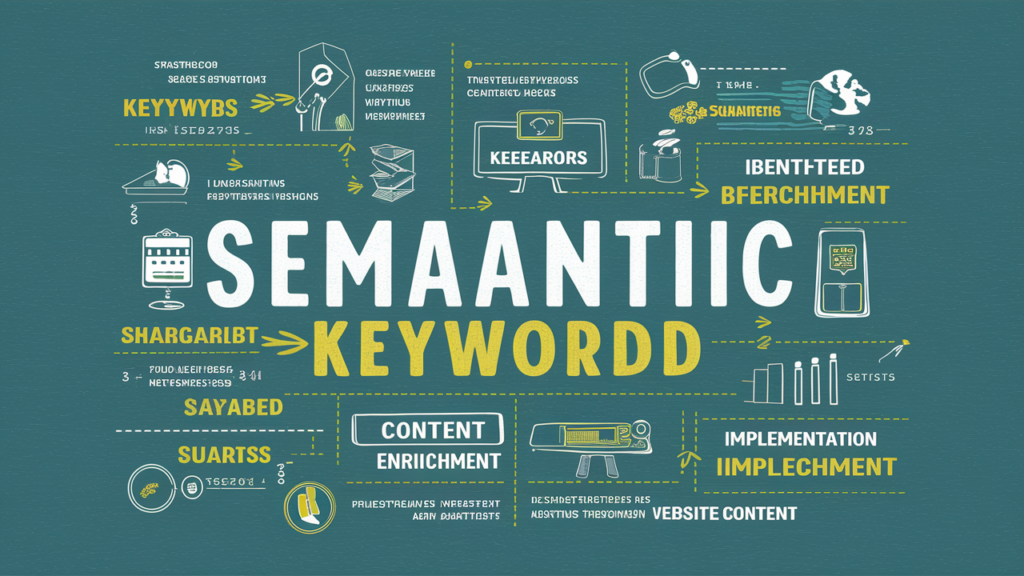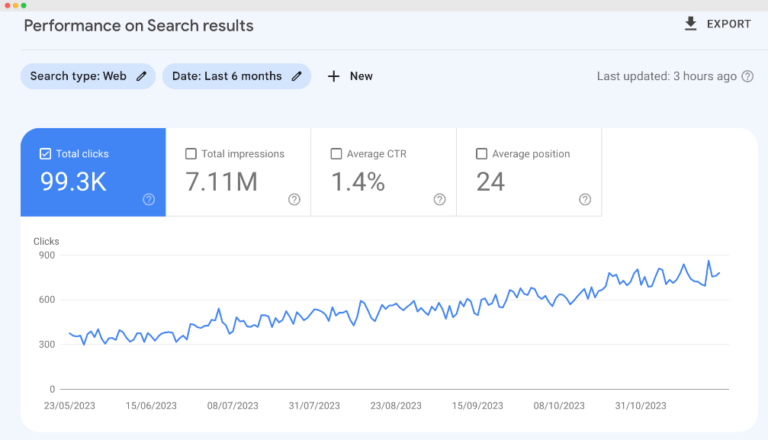Book Appointment Now

Case Study: Byson Real Estate’s 47% Traffic Increase Using Semantic SEO
Byson Real Estate, a mid-sized real estate company, faced significant challenges with their online presence. Despite having a user-friendly website and a plethora of listings, their organic traffic was stagnating. Recognizing the need for a robust digital strategy, they turned to Semantic SEO. This case study explores how Byson Real Estate implemented Semantic SEO to achieve a 47% increase in organic traffic.
Background
Byson Real Estate offers a comprehensive platform for buying, selling, and renting properties. Their website, featuring detailed property listings, blog posts, and market insights, was well-designed but not effectively reaching its target audience.
Key Features of Byson Real Estate’s Website:
- Property listings with high-quality images and detailed descriptions.
- Blog section with articles on market trends, buying/selling tips, and local insights.
- User-friendly interface with advanced search and filtering options.
- Integrated customer support chat for real-time assistance.
Initial Technical Environment:
- Website built on a popular CMS (Content Management System).
- Basic SEO practices in place (keywords, meta descriptions, etc.).
- Google Analytics and Search Console set up for performance tracking.
- Moderate presence on social media platforms.
Symptoms Reported:
- Stagnant organic traffic for six months.
- High bounce rate on key landing pages.
- Low engagement on blog posts and property listings.
- Inconsistent rankings on search engines for target keywords.
Technical Issue Encountered

The primary issue identified was that Byson Real Estate’s existing SEO strategy was overly reliant on traditional keyword optimization, which was no longer sufficient in the evolving digital landscape. The content lacked depth and context, leading to poor search engine performance.
Customer Communication:
- “Our traffic has plateaued, and our bounce rates are too high. We need to reach more potential buyers and sellers through organic search.”
- “Despite our efforts, our blog posts and property listings aren’t engaging our visitors as we expected.”
Initial Impact:
- Reduced online visibility leading to fewer leads and conversions.
- Competitive disadvantage as other real estate websites were attracting more traffic.
Initial Troubleshooting Steps
Byson Real Estate’s digital marketing team undertook several initial troubleshooting steps:
- Content Audit: Reviewed all existing content to identify gaps and areas for improvement.
- SEO Analysis: Conducted an in-depth SEO audit using tools like SEMrush and Ahrefs.
- Competitor Analysis: Analyzed competitors’ websites to understand their SEO strategies and performance.
- Consultation with SEO Experts: Engaged with SEO consultants to gain insights into advanced SEO techniques, particularly Semantic SEO.
Diagnostic Process
Diagnostic Tools and Methodologies:
- Content Analysis Tools: Used tools like Clearscope and MarketMuse to evaluate the semantic richness of their content.
- SEO Audits: Regular audits using tools such as Screaming Frog, Google Search Console, and Moz.
- User Behavior Analysis: Employed heatmaps and session recordings using tools like Hotjar to understand user behavior on key pages.
- Technical SEO Tools: Utilized Lighthouse and PageSpeed Insights to assess and improve technical SEO aspects.
Escalation to Specialized Teams: When initial efforts did not yield significant improvements, Byson Real Estate escalated the issue to a specialized SEO agency experienced in Semantic SEO.
Resolution
Solution Implemented:
- Semantic Keyword Research: Identified and incorporated semantically related keywords and phrases into their content.
- Content Enrichment: Updated existing content and created new, in-depth articles covering various aspects of real estate, ensuring they provided valuable information and answered users’ queries comprehensively.
- Schema Markup Implementation: Added structured data to help search engines better understand the content and improve search visibility.
- Internal Linking Strategy: Developed a robust internal linking strategy to improve the website’s structure and distribute link equity effectively.
- User Experience Improvements: Enhanced the overall user experience by optimizing page load times, mobile responsiveness, and navigation.
Steps Taken:
- Detailed content plan focusing on user intent and information depth.
- Regular updates and expansions of property listings and blog posts.
- Implementation of structured data and rich snippets.
- Continuous monitoring and adjustments based on performance metrics.
Testing and Validation:
The testing and validation process was crucial to ensure the effectiveness of the implemented solutions. Byson Real Estate closely monitored changes in traffic, bounce rates, and user engagement metrics using Google Analytics. They conducted A/B testing on key pages to identify the most effective content strategies and made adjustments accordingly.
Regular reviews of the internal linking structure and updates to the content plan ensured that the website remained optimized and relevant. Continuous monitoring and iterative improvements based on performance metrics validated the success of the Semantic SEO strategy and its positive impact on the website’s performance.
Customer Feedback
Byson Real Estate’s management and users provided overwhelmingly positive feedback on the implemented changes. The management noted a significant improvement in the website’s visibility on search engines, which directly contributed to the 47% increase in organic traffic.
They observed that the quality of leads had improved, leading to higher conversion rates and better overall engagement with their platform. Users also appreciated the enhanced website experience, noting that the content was more informative and relevant to their needs. This feedback highlighted the success of the Semantic SEO strategy and its impact on the company’s operations.

Impact on Operations:
- 47% increase in organic traffic within six months.
- Enhanced user engagement and lower bounce rates.
- Higher quality leads resulting in increased conversions.
Lessons Learned and Best Practices
Lessons Learned:
- Traditional SEO practices need to be complemented with advanced techniques like Semantic SEO.
- Content depth and relevance are crucial for improving search engine rankings and user engagement.
- Continuous monitoring and adjustment are necessary to maintain and improve SEO performance.
Best Practices for Future Support:
- Regularly update content to ensure it remains relevant and valuable to users.
- Utilize semantic keyword research to enhance content richness.
- Implement and maintain structured data to improve search visibility.
- Conduct regular SEO audits and adjust strategies based on findings.
Recommendations for Process Improvements:
- Establish a continuous feedback loop between the marketing and technical teams.
- Invest in ongoing SEO training for the marketing team.
- Regularly review and update the SEO strategy to adapt to changing search engine algorithms and user behaviors.
Conclusion
Byson Real Estate’s adoption of Semantic SEO resulted in a remarkable 47% increase in organic traffic. This case study highlights the importance of evolving SEO strategies to stay competitive in the digital landscape. The detailed troubleshooting and implementation process provides valuable insights and best practices for other businesses facing similar challenges.
Summary: Byson Real Estate faced stagnant organic traffic due to outdated SEO practices. Through the implementation of Semantic SEO, they achieved a 47% increase in traffic, improved user engagement, and higher quality leads. This case study serves as a comprehensive guide for businesses looking to enhance their digital marketing strategies through advanced SEO techniques.
Sugrib has 4 years of experience in both SEO and web design. His dual expertise allows him to create websites that are not only aesthetically pleasing but also optimized for search engines. His technical skills ensure that our clients’ websites look great.

